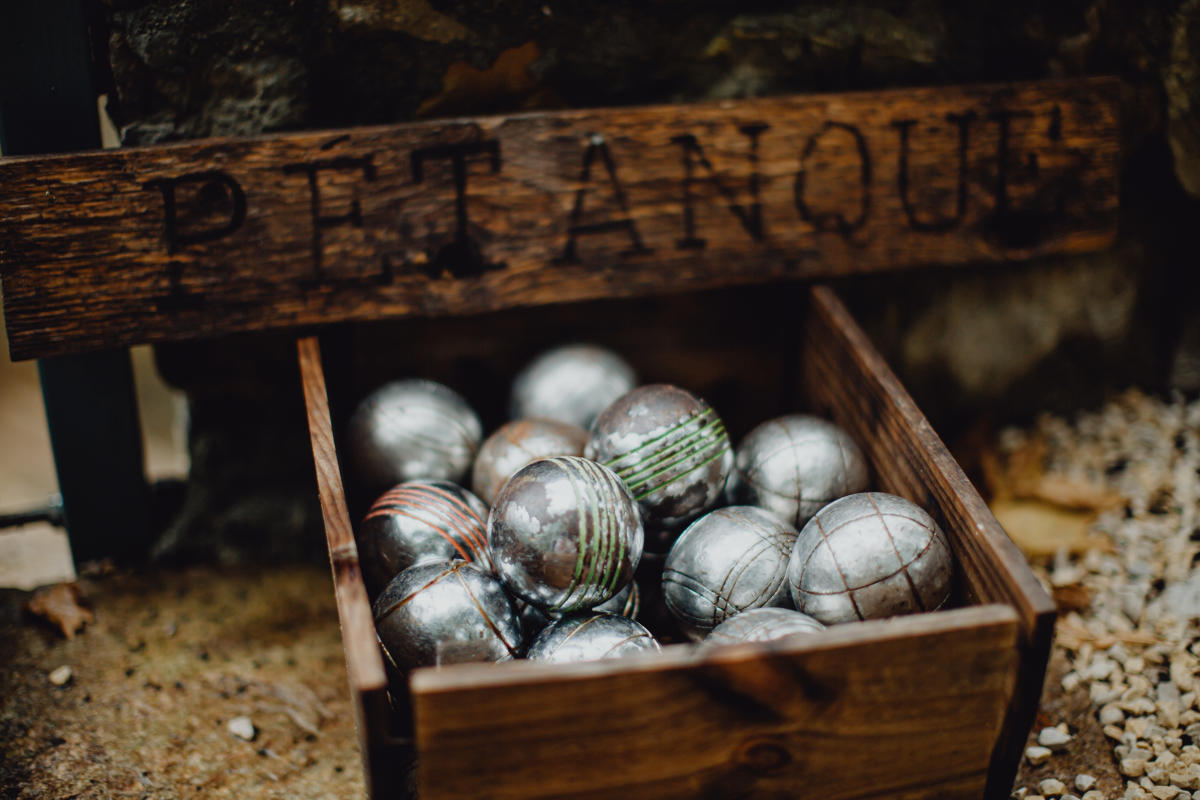The Game of Pétanque
Pétanque (pronounced pay-tonk) is a lawn game that was created in the Provence region of France in the early 1900s. It falls into the boule category of sports, where the goal of the game is for a team or player to get their boules, or balls, as close to the target ball as possible. The name ‘Pétanque' originated from the sound that the metallic boules make when they hit each other.
Joel’s Pétanque Club
Retired UW-Eau Claire professor Donald Bredle stumbled upon the game while attending monthly travel meetings known as ‘The World Cultural Center.’ Each month, an individual from a foreign country, or a recent traveler from a foreign country, would give an in-depth presentation about a country. The woman who started these meetings, whom everyone referred to as Nanou, was French and introduced the group to the game of Pétanque. The game caught on with many members of the group, so Nanou decided to start a Pétanque club. She named the club 'Joel’s Pétanque Club' in honor of her son, Joel, who passed away due to a medical condition.
Eight years later, Bredle and other members are still involved with Joel’s Pétanque club, meeting twice a week to play the game.
“There’s a group of about a dozen of us that play regularly still,” Bredle said. “We always play out in public and we are always offering people passing by who are interested to come play with us.”

How to Play Pétanque
Pétanque is played with two teams, and the overall goal of each team is to get their metal boules as close as possible to a small wooden target ball, known as a jack. The number of boules per team depends on how many members are on a team. A circle is drawn on the playing surface that is 20 inches in diameter, and the player tossing the ball must not leave this circle while tossing. A team member will then toss the jack anywhere between 20-30 feet away from the players. A player from the same team will toss a boule to get it as close to the jack as possible. Then a player from the second team will toss their boule, trying to get it closer to the jack than team one. Whichever boule lands closest to the jack wins a point. Play like this will continue with alternating teams tossing their boules until all boules have been thrown. At this point, the round is over, and teams will count their points. The winning team is the team that has the closest boule to the jack and will get extra points if they have multiple boules closer to the jack than the other team. Play will start with a new round, and rounds will continue until a team has won 13 points.
Where to play Pétanque in the Chippewa Valley
Pétanque can essentially be played anywhere, but it is traditionally played on gravel or a hard surface. The official regulation size for the playing pitch is 12 by 30 feet. Bredle says that one of the best places to play the game is in River Prairie Park, in the gravel empty space adjacent to The Island Parkside.
“One day we stumbled upon that spot in River Prairie and we thought ‘Man, this is perfect,’” Bredle said. “That smooth white gravel is the perfect playing surface for Pétanque. It’s very popular in France, but it's harder to find that surface here.”
Another good spot to play Pétanque is on the gravel path that runs through Wilson Park. Joel’s Pétanque Club recently worked with the City of Eau Claire to modify the path, making it wider to fit the regulations of the game.
Joel’s Pétanque Club meets in Wilson Park every Sunday at 2 pm and every Wednesday at 5:30 pm in River Prairie Park. Everyone is welcome to play, no matter your knowledge or skillset.
“If you try it once, there’s a good chance you’ll enjoy the game. It doesn’t take super strength or skill; it just takes some hand-eye coordination.”
If you want to try out Pétanque or have any questions about the game, feel free to reach out to Donald Bredle at Bredledl@uwec.edu.



